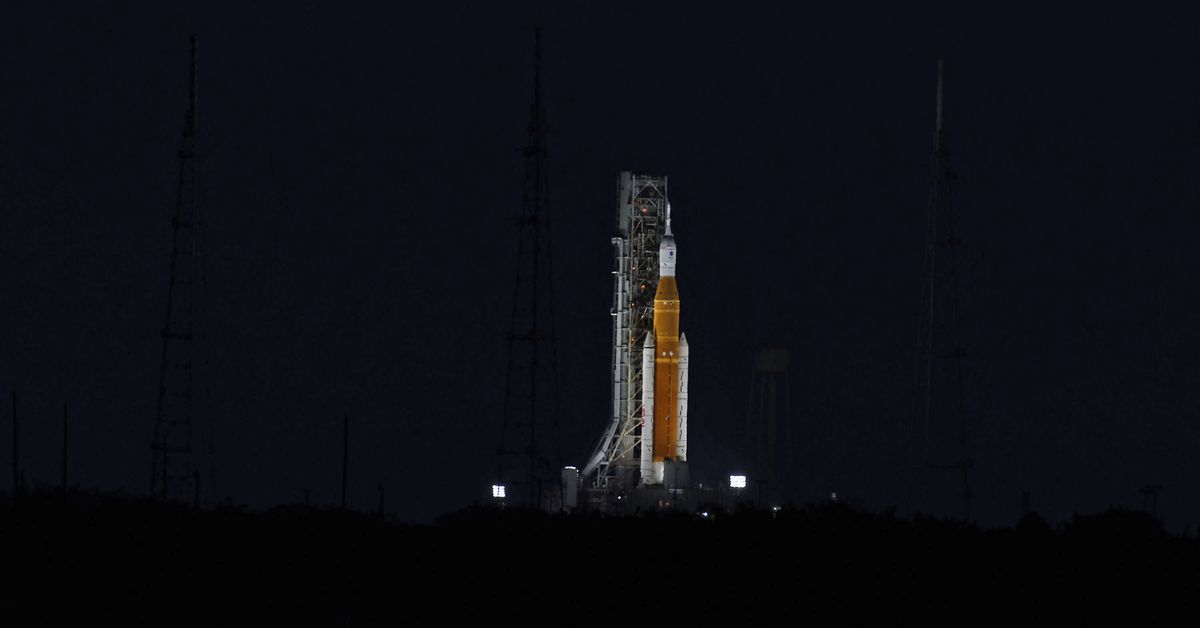NASA’s Space Launch System rocket weathers the storm
Source: The Verge added 14th Nov 2022NASA’s Artemis I mission is still set to launch this week after its Space Launch System rocket and Orion spacecraft were buffeted by high winds during Hurricane Nicole. The rocket and spacecraft suffered only “very minor damage,” according to NASA officials, but some material did come loose from Orion and could pose an issue to launch. The aim of the Artemis I mission is to launch the spacecraft on an uncrewed mission around the Moon to test out the technology before a series of crewed missions visit the Moon.
The decision to leave the rocket on the launchpad during a hurricane was controversial, as experts were concerned that high winds could cause it to rock. Previously, when Hurricane Ian threatened the Florida coast last month, the rocket was returned to a building called the Vehicle Assembly Building for safety. But last week, NASA officials chose to leave the rocket on the pad when Hurricane Nicole, then classified as a tropical storm, was approaching.
NASA officials said the issue was that rolling the rocket back to the building would have been its own risk by the time predictions of strong winds were coming in. “The winds were really high and the risk of rolling — that dynamic movement, which in general drives a lot of load into the vehicle — and the risk of moving with the high winds, we decided to stay at the pad,” Jim Free, associate administrator for Exploration Systems Development, explained in a mission briefing.
The rocket seems to have weathered the storm with only minor damage. There were two primary issues of concern: an electrical connector on the umbilical that sends liquid hydrogen fuel to the rocket which was deemed “suspect”; and some material which came loose from the Orion spacecraft.
The electrical connector is being repaired, but the loose material is another story. The material, called room temperature vulcanizing silicone, or RTV, has peeled away from the side of the spacecraft. The area affected is about 10 feet long and is a “very, very thin layer of RTV,” Mike Sarafin, mission manager for Artemis I, said in a prelaunch briefing. “It’s about 0.2 inches or less in thickness.”
It isn’t possible to access the Orion spacecraft at the pad to repair the RTV because it is too high up on the 322-foot-tall rocket stack. The team is confident that the Orion spacecraft won’t be damaged by the loss of this material — there are further protections underneath the layer that prevent the spacecraft from overheating as it passes through the atmosphere.
But there is some concern that some of this material could come loose during launch and create debris that could damage the rocket, so the team is reviewing whether this could pose a danger.
“We need to just spend a little more time to review our flight rationale headed into this launch attempt, specifically as it pertains to liberation of any remaining RTV and debris transport,” Sarafin said, adding that the team would meet today to assess the situation further.
media: 'The Verge'
Related posts
Notice: Undefined variable: all_related in /var/www/vhosts/rondea.com/httpdocs/wp-content/themes/rondea-2-0/single-article.php on line 88
Notice: Undefined variable: all_related in /var/www/vhosts/rondea.com/httpdocs/wp-content/themes/rondea-2-0/single-article.php on line 88
Related Products
Notice: Undefined variable: all_related in /var/www/vhosts/rondea.com/httpdocs/wp-content/themes/rondea-2-0/single-article.php on line 91
Warning: Invalid argument supplied for foreach() in /var/www/vhosts/rondea.com/httpdocs/wp-content/themes/rondea-2-0/single-article.php on line 91
